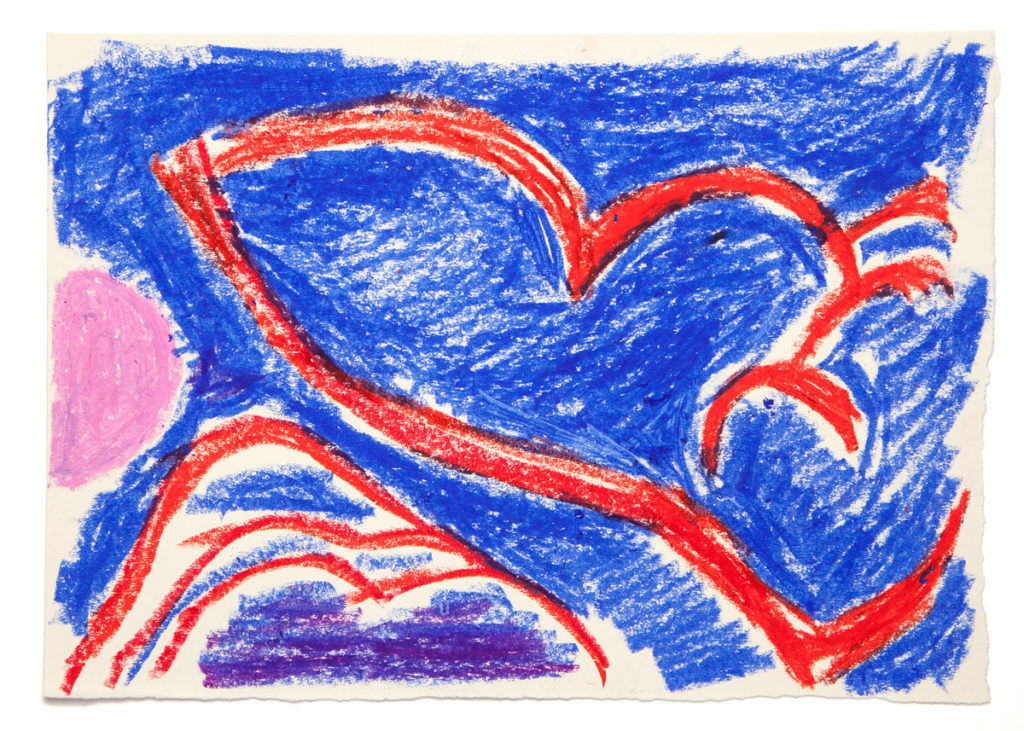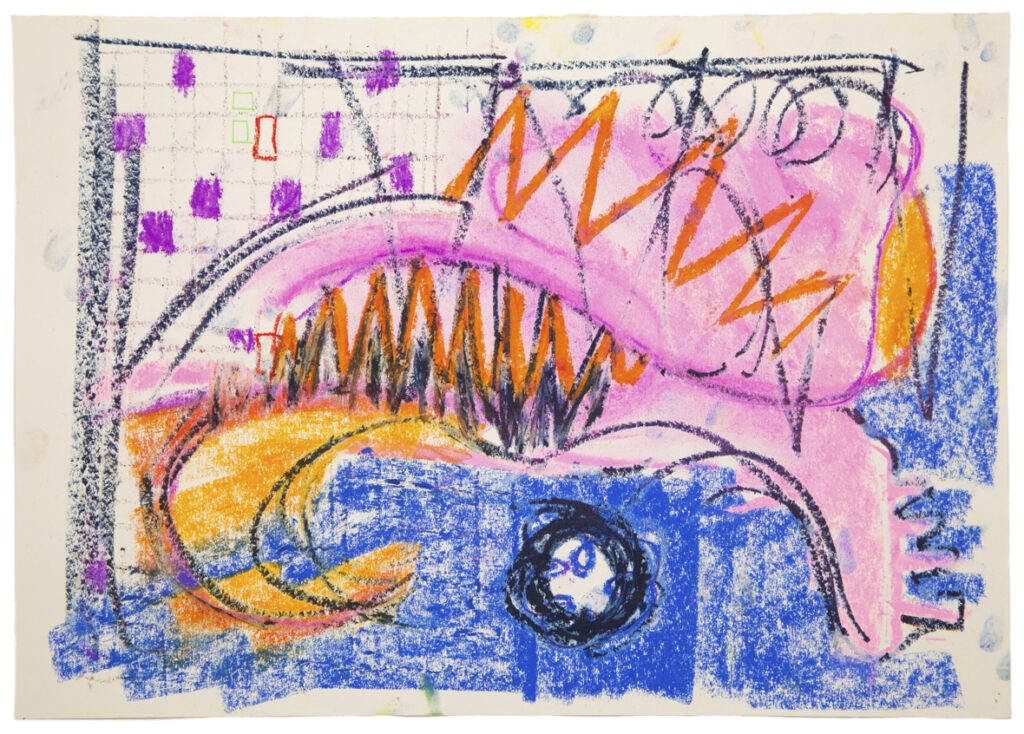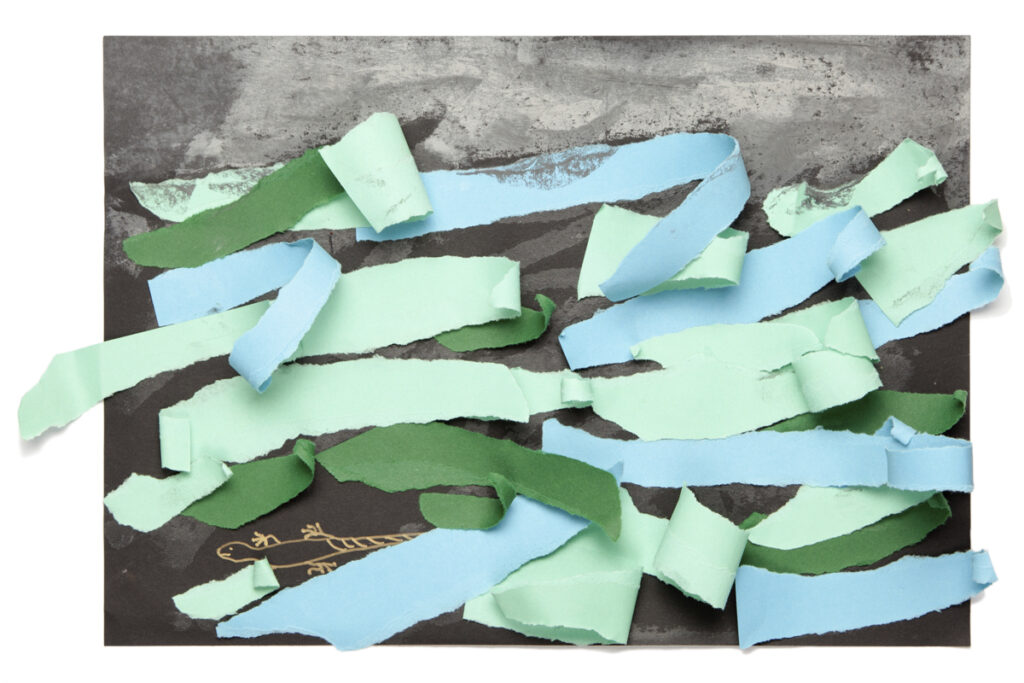Tasks
Task 1 – Winnicott Squiggles


All participants worked in pairs, making “Winnicott squiggles”*. One person would draw some “squiggles” (a twisted line drawn at random), which the other one transformed into a drawing of a creature. This process was repeated with a change of roles. In our exploration, each participant was then asked to copy the ‘creature’ which the other person had made from the squiggle.
Who is the author of the finished drawing?
“Winnicott squiggles” is a drawing game or technique created by British pediatrician and psychoanalyst Donald Winnicott (1896-1971) to elicit thoughts and feelings with children.
Task 2 – Copying
At the end of the activity, is the drawing in front of each participant theirs?

The participants were provided with paper and oil pastels and felt pens and asked to copy all or part of one of three images (paintings reproduced in postcard size). No indication was given as to who had made the original images.
Task 3 – Collective Creation

This activity involved group images, created in a short period of time, with each participant doing a small task on a sheet of paper before it was passed on to the next person. Karen gave direction in terms of timings and method (for example, ‘add some background’ or ‘add some detail’), but not in terms of what to draw. At the end of the activity, there were as many group images as there were participants, each containing some marks or drawings of each person in the group.
At the end of the activity, whose work is whose?
Task 4 – Individual Creation

Each participant in the group made their own individual image from the request to make an image, depicting a creature, a man-made thing and something that grows.
This exercise is a type of ‘non-task task’ whereby you can depict almost anything despite the fact that the directions appear very specific.
To whom does the finished piece belong?